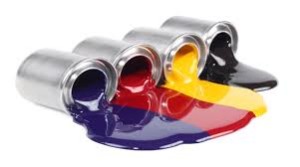
Paints breathe life into objects and make them highly attractive and appealing and at the same time also safeguard them from environmental hazards. Paints can be categorized into decorative paints which lend aesthetic appeal to buildings and other items and industrial coatings used in several manufacturing units.
Constituents of Paint
The major constituent of paint which imparts color to objects is pigments for paints. In addition to the pigment there are several components added to make the paint mixture such as binder, extender, solvent and certain additives. Each of them has a specific role to play in making the entire mixture effective. Binder or resin as it is referred to help to form a matrix and ensure that the pigment adheres to the substrate. There are three common binders used in the paint industry and they are acrylic resins, alkyd resins and epoxy resins. Acrylic resins are used in decorative paints as well as in industrial coatings and go in the form of solvent borne paints or water-borne emulsion paints. Alkyd resins are typically used in decorative gloss paints while epoxy resins are vital for industrial coatings.
Extender is nothing but large sized pigment particles inserted to enhance adhesion, save binder amount and give more strength to the film. Solvent or the thinner can be water or an organic solvent that decreases the paint’s viscosity for a superior application. Additives are included to enhance the features of the dry film or the paint in its liquid form. Bactericides, dispersants, driers, silicones, thixotropic agents, anti-settling agents, fungicides are just to name a few of them and they individually add to the qualities of the paint.
Formulation of Paint
Paints are formulated depending upon the intended application. The stages range from applying the primer, undercoat and then the specific finish like gloss, matt, abrasion resistance, anti-corrosiveness, heat resistance and so on. The broken individual particles of pigment powder are diffused in the binder; the process is known as ‘wetting out’. The required consistency is obtained by adding solvent in the desired quantities. The ingredients are then stirred well in huge containers in batches along with the necessary additives. Application methods range from dipping, roller, brush, spraying, flow coating, airless spraying, electrostatic spraying, powder coating, immersion, vacuum impregnation and hot spraying.
Characteristics of a Good Paint
White titanium oxide, an inorganic pigment accounts for almost 70% of the total pigments for paints. Among the organic pigments, anthraquinone and phthalocyanine derivatives account for a large percentage. The features of a good paint vary depending upon the application. Some of them include easiness in application, good flow, high opacity, heat and water resistance, anti-corrosiveness, scratch resistance, quick drying, flexibility, ease of cleaning and so on.
Assuaging Environmental Concerns
Greater awareness of preserving our environment has led to the elimination of lead compounds from paints used in automobile industry and for decorative purposes. Specific industrial paints have drastically cut down their lead content. Greater use of water based or emulsion paints, powder coatings or high solids paints has become the way to go. And the leaders in the industry are paving the way for others to follow!